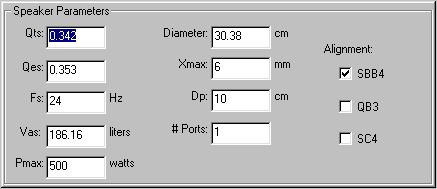

Butt-joints are also easier to seal and are still aesthetically pleasing. However, butt-joints are stronger and easier to do than miter joints. We can butt-joint the board pieces together or miter them for a seamless look. After cutting your boards, it's now a matter of assembling the panels to form the speaker box.Our calculator offers six designs for you to choose from, as you can see in the assembly case field of our calculator. The measurements of the panels depend on the design of your speaker box.

On the other hand, we can also see in the example above that the side panel's width is the same as the speaker box's depth. This also holds with the side panel's height. From the sample illustration below, we can see that the front panel's width is smaller than the speaker box's width by twice the board's thickness. We can calculate each panel's dimensions depending on the speaker box's dimensions and the board's thickness. Once you've decided on the size and design to build, the next step is to determine your speaker box's board panels' measurements.Here is a side-by-side comparison of the sealed (left) and ported (right) speaker boxes: On the other hand, if you are not much concerned by the bass, a sealed speaker box should be your go-to option. If you are keen on clean audio and deep bass, your best choice is a ported speaker box. The first step in building a speaker box is to decide on its design and size.We cut boards of wood or fiberboard to size and assemble them into a closed box with proper sealing, using enough glue or caulking on the joints. Building a speaker box is like building any kind of wooden box, except that it doesn't have any moving parts like lids or covers.


 0 kommentar(er)
0 kommentar(er)
